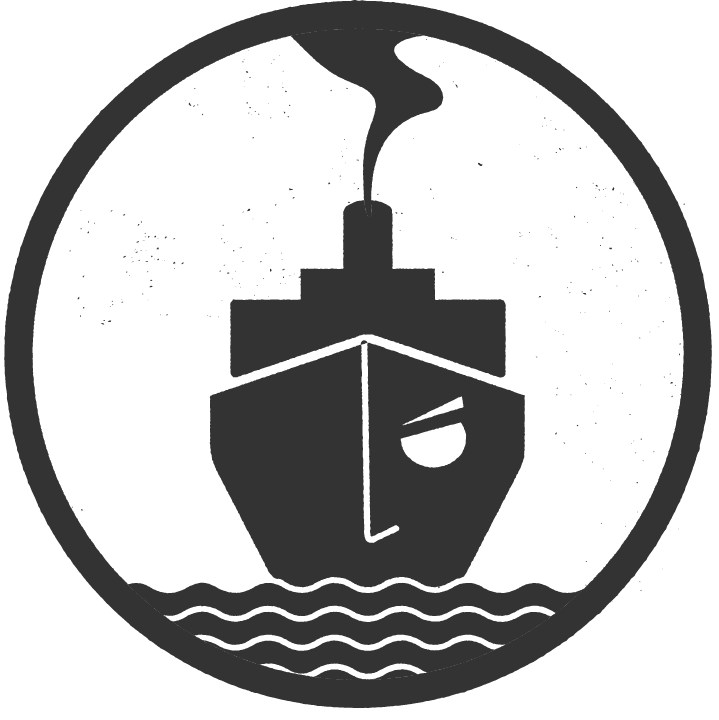acetamide resonance structures24 Apr acetamide resonance structures
Acetanilide has been in use for treating fever and pain since the late 19th century, but it causes negative side effects; it interferes with the oxygen-carrying capacity of hemoglobin in the body. Acyl Chloride Reactions & Synthesis | Acyl Chloride Overview, Acid Dissociation Constant | Overview, Formula & Examples. However, sometimes benzene will be drawn with a circle inside the hexagon, either solid or dashed, as a way of drawing a resonance hybrid. Alternately, it can be produced from anhydrous acetic acid (CH3COOH), dried hydrogen chloride gas, and acetonitrile in an ice bath along with a reagent acetyl chloride. To unlock this lesson you must be a Study.com Member. formal charges close to zero as possible. Rather, at all moments, the molecule is a combination, or resonance hybrid of both A and B. Plasticizers are the compounds added to enhance the flow of the polymer during its production. double bond must therefore be placed in the structure shown in Fig 1: Sitemap - Table of Contents (Lewis Electron Dot Structures). - Structure, Uses & Properties, Chromic Acid: Solution Preparation, Disposal & Hazards, What is Methyl Red? I would definitely recommend Study.com to my colleagues. C2H5NO is an organic compound with chemical name Acetamide. Acetanilide is an organic chemical compound (meaning it's composed of carbon and hydrogen mostly) that is classified as an amide in terms of its functional group. By convention, resonance contributors are linked by a double-headed arrow, and are sometimes enclosed by brackets: In order to make it easier to visualize the difference between two resonance contributors, small, curved arrows are often used. Benzene is often drawn as only one of the two possible resonance contributors (it is assumed that the reader understands that resonance hybridization is implied). If the true structure of the thiocyanate ion was the second resonance structure then we would expect the bonds of the real structure to be second order, or entirely double bonds. They have the same atoms, the same connections, the same overall charge, but where the valance electrons are different between the resonance structures. This website collects cookies to deliver a better user experience. Nitrogen would typically have five. Do we always check for the first of the two principles from the list to decide which Lewis structure contributes most to the resonance hybrid? in preparation of cosmetics and hypnotics. Organic acid-base mechanisms. Assume the atoms . All right, now let's work It is an azo dye. A resonance structure having less charge separation helps it contribute more because charge separation creates instability. This system can be thought of as four parallel 2p orbitals (one each on C2, C3, and C4, plus one on oxygen) sharing four pi electrons. The relative stabilities of the two structures are so vastly different that molecules which contain a C=O bond are almost exclusively written in a form like structure A. Sulfanilamide can be prepared from acetanilide very easily, even by students in introductory organic chemistry laboratory courses, and is known for its antibacterial properties. If a formal charge is unavoidable than resonance structures with negative formal charges on more electronegative atoms like oxygen or nitrogen is more stable and helps the resonance structures contribution to the hybrid. The other resonance structure of acetamide forms by the involvement of N lone pair to the neighboring C-N bond. In structure A the charges are closer together making it more stable. The molecules in the figure below are not resonance structures of the same molecule even though they have the same molecular formula (C3H6O). Food Chem., 46, 1998, 3207-3209. ass: Standard polar; Column diameter: 0.25 mm; Column length: 30 m; Column type: Capillary; Heat rate: 10 K/min; Start T: 40 C; End T: 220 C; End time: 10 min; Start time: 5 min; CAS no: 60355; Active phase: RTX-Wax; Carrier gas: He; Phase thickness: 0.5 um; Data type: Normal alkane RI; Authors: Prososki, R.A.; Etzel, M.R. A similar set of resonance structures for the phenolate anion conjugate base appears below the phenol structures. outer electrons hanging out than we would typically The plasticizer does not change the chemical structure and properties of the polymer. An error occurred trying to load this video. A carbocation (carbon with only 6 valence electrons) is the only allowed exception to the valence shell rules. resonance structures, we only have one atom whose A carbon with a negative charge is the least favorable conformation for the molecule to exist, so the last resonance form contributes very little for the stability of the Ion. As examples: Structure of Amides is shared under a CC BY-NC-SA 4.0 license and was authored, remixed, and/or curated by LibreTexts. On an industrial scale, it can be produced by dehydrating ammonium acetate or by hydrolyzing acetonitrile. Label each one as major or minor (the structure below is of a major contributor). structures contributes most to the resonance hybrid of thiocyanate? 5. The resonance structures in which all atoms have complete valence shells is more stable. They've given us the various elements in these resonance structures, and they've told us their It belongs to a family of pharmaceutical compounds known as sufa drugs. A member of the class of acetamides that is acetamide in which one of the hydrogens attached to the nitrogen is substituted by a phenyl group. Polymers have acetanilide as a plasticizer. You'll get a detailed solution from a subject matter expert that helps you learn core concepts. The functional group is highlighted in blue in the image below. In chemical laboratories, it can be produced by dehydration of ammonium acetate. Get unlimited access to over 88,000 lessons. The compounds of the invention are useful in both therapeutic and diagno So let me write that down. Acetanilide | C8H9NO | CID 904 - structure, chemical names, physical and chemical properties, classification, patents, literature, biological activities, safety . It's because the lone pair of electrons is tied up in resonance. As close to zero as possible. Since then, only the compounds produced from acetanilide are in use in the pharmaceutical industry. 3) Draw three resonance contributors of methyl acetate (an ester with the structure CH3COOCH3), and order them according to their relative importance to the bonding picture of the molecule. Experiments show that the geometry about the nitrogen atom in acetamide is nearly planar. Accessibility StatementFor more information contact us atinfo@libretexts.orgor check out our status page at https://status.libretexts.org. NCERT Solutions Class 12 Business Studies, NCERT Solutions Class 12 Accountancy Part 1, NCERT Solutions Class 12 Accountancy Part 2, NCERT Solutions Class 11 Business Studies, NCERT Solutions for Class 10 Social Science, NCERT Solutions for Class 10 Maths Chapter 1, NCERT Solutions for Class 10 Maths Chapter 2, NCERT Solutions for Class 10 Maths Chapter 3, NCERT Solutions for Class 10 Maths Chapter 4, NCERT Solutions for Class 10 Maths Chapter 5, NCERT Solutions for Class 10 Maths Chapter 6, NCERT Solutions for Class 10 Maths Chapter 7, NCERT Solutions for Class 10 Maths Chapter 8, NCERT Solutions for Class 10 Maths Chapter 9, NCERT Solutions for Class 10 Maths Chapter 10, NCERT Solutions for Class 10 Maths Chapter 11, NCERT Solutions for Class 10 Maths Chapter 12, NCERT Solutions for Class 10 Maths Chapter 13, NCERT Solutions for Class 10 Maths Chapter 14, NCERT Solutions for Class 10 Maths Chapter 15, NCERT Solutions for Class 10 Science Chapter 1, NCERT Solutions for Class 10 Science Chapter 2, NCERT Solutions for Class 10 Science Chapter 3, NCERT Solutions for Class 10 Science Chapter 4, NCERT Solutions for Class 10 Science Chapter 5, NCERT Solutions for Class 10 Science Chapter 6, NCERT Solutions for Class 10 Science Chapter 7, NCERT Solutions for Class 10 Science Chapter 8, NCERT Solutions for Class 10 Science Chapter 9, NCERT Solutions for Class 10 Science Chapter 10, NCERT Solutions for Class 10 Science Chapter 11, NCERT Solutions for Class 10 Science Chapter 12, NCERT Solutions for Class 10 Science Chapter 13, NCERT Solutions for Class 10 Science Chapter 14, NCERT Solutions for Class 10 Science Chapter 15, NCERT Solutions for Class 10 Science Chapter 16, NCERT Solutions For Class 9 Social Science, NCERT Solutions For Class 9 Maths Chapter 1, NCERT Solutions For Class 9 Maths Chapter 2, NCERT Solutions For Class 9 Maths Chapter 3, NCERT Solutions For Class 9 Maths Chapter 4, NCERT Solutions For Class 9 Maths Chapter 5, NCERT Solutions For Class 9 Maths Chapter 6, NCERT Solutions For Class 9 Maths Chapter 7, NCERT Solutions For Class 9 Maths Chapter 8, NCERT Solutions For Class 9 Maths Chapter 9, NCERT Solutions For Class 9 Maths Chapter 10, NCERT Solutions For Class 9 Maths Chapter 11, NCERT Solutions For Class 9 Maths Chapter 12, NCERT Solutions For Class 9 Maths Chapter 13, NCERT Solutions For Class 9 Maths Chapter 14, NCERT Solutions For Class 9 Maths Chapter 15, NCERT Solutions for Class 9 Science Chapter 1, NCERT Solutions for Class 9 Science Chapter 2, NCERT Solutions for Class 9 Science Chapter 3, NCERT Solutions for Class 9 Science Chapter 4, NCERT Solutions for Class 9 Science Chapter 5, NCERT Solutions for Class 9 Science Chapter 6, NCERT Solutions for Class 9 Science Chapter 7, NCERT Solutions for Class 9 Science Chapter 8, NCERT Solutions for Class 9 Science Chapter 9, NCERT Solutions for Class 9 Science Chapter 10, NCERT Solutions for Class 9 Science Chapter 11, NCERT Solutions for Class 9 Science Chapter 12, NCERT Solutions for Class 9 Science Chapter 13, NCERT Solutions for Class 9 Science Chapter 14, NCERT Solutions for Class 9 Science Chapter 15, NCERT Solutions for Class 8 Social Science, NCERT Solutions for Class 7 Social Science, NCERT Solutions For Class 6 Social Science, CBSE Previous Year Question Papers Class 10, CBSE Previous Year Question Papers Class 12, Important Questions For Class 12 Chemistry, Important Questions For Class 11 Chemistry, Important Questions For Class 10 Chemistry, Important Questions For Class 9 Chemistry, Important Questions For Class 8 Chemistry, Important Questions For Class 7 Chemistry, Important Questions For Class 6 Chemistry, Class 12 Chemistry Viva Questions With Answers, Class 11 Chemistry Viva Questions With Answers, Class 10 Chemistry Viva Questions With Answers, Class 9 Chemistry Viva Questions With Answers, CBSE Previous Year Question Papers Class 10 Science, CBSE Previous Year Question Papers Class 12 Physics, CBSE Previous Year Question Papers Class 12 Chemistry, CBSE Previous Year Question Papers Class 12 Biology, ICSE Previous Year Question Papers Class 10 Physics, ICSE Previous Year Question Papers Class 10 Chemistry, ICSE Previous Year Question Papers Class 10 Maths, ISC Previous Year Question Papers Class 12 Physics, ISC Previous Year Question Papers Class 12 Chemistry, ISC Previous Year Question Papers Class 12 Biology, JEE Main 2023 Question Papers with Answers, JEE Main 2022 Question Papers with Answers, JEE Advanced 2022 Question Paper with Answers. We also acknowledge previous National Science Foundation support under grant numbers 1246120, 1525057, and 1413739. This entity has been manually annotated by the ChEBI Team. Ka and pKa review. The starting materials for making Para Red are p-nitroaniline and p-naphthol. It is a member of the class of acetamides which results from the formal condensation of acetic acid (CH3COOH) with ammonia (NH3). It consists of a methyl group connected to the carbonyl carbon of the amide. resonance structure here. When a molecule has nonequivalent resonance structures, one structure may contribute more to the resonance hybrid than another. The functional group present in acetanilide is the amide group, >CONH-. It's kind of like taking what looks like a complex math problem. Five minus seven is negative two. Draw the major resonance contributor for the enamine, and explain why your contributor is the major one. This is also a good illustration that helps to explain why the nitrogen atom of acetanilide cannot act as a base (in other words, a hydrogen ion acceptor) nor as a nucleophile (an electron pair donor). Carbon, we have four outer { Amides_Background : "property get [Map MindTouch.Deki.Logic.ExtensionProcessorQueryProvider+<>c__DisplayClass228_0.
Is The Willard Hotel Haunted,
Roger Harrington Obituary,
Alliance Physical Therapy Attorney Portal,
Ocean City Island To Island Half Marathon 2022,
Articles A



